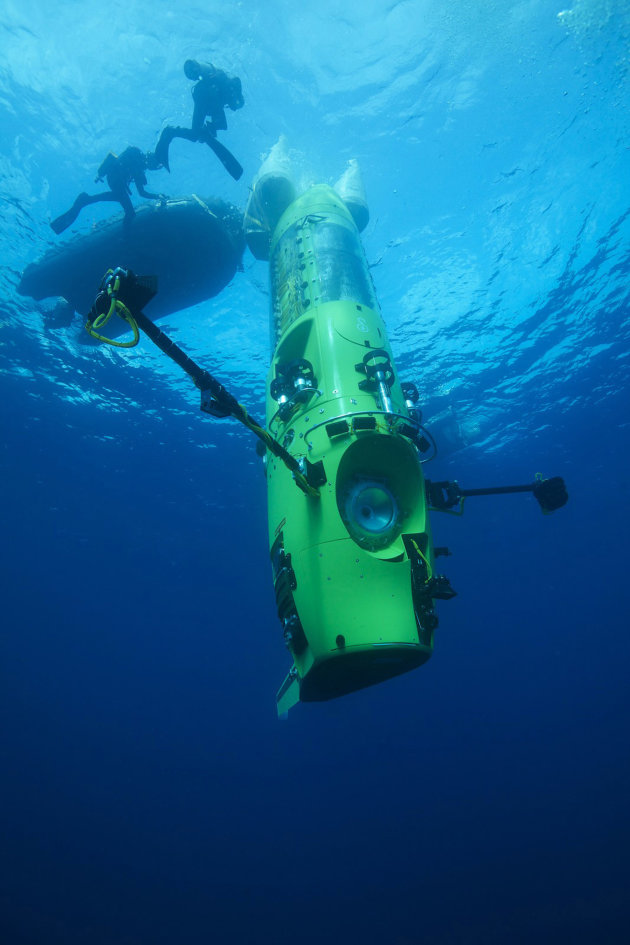Director Cameron starts record-setting Pacific dive, article and two short videos.
He collected samples for research in marine biology, microbiology, astrobiology, marine geology and geophysics, and captured photographs and 3D moving images.
[...] The water pressure at the bottom is a crushing eight tons per square inch -- or about a thousand times the standard atmospheric pressure at sea level.
It must be a challenge to make porthole glass which can withstand that pressure, and be optically perfect for the cameras.

6 comments:
I have great respect for Cameron. His films may not be exactly high art, but then he channels the money thus obtained to science, and contributes to society that way.
He recently moved to New Zealand, by the way.
Well, if I had to design this thing I'd put the cameras outside and fill them with liquid. You'd need to design the optics for the refractive index of the fluid inside (most likely > 1), but there would be no stress from the pressure. Your porthole could be a rather thin plastic shell, just keeping the seawater out ...
Yeah, that sounds like a good idea. I wonder what liquid would work, water does not sound like a good idea, even if you tried to make everything corrosion-proof. Oil then?
I suspect if that would work someone would have tried it by now.
Hmm, Google shows that I wasn't the first with that idea (For example http://ieeexplore.ieee.org/xpl/freeabs_all.jsp?arnumber=1145365: "A liquid filled housing was fabricated for the camera as was a liquid filled lens. The completed PTTV camera was then tested to a depth of 6500 m and found to operate as well at this depth as at the surface.") They don't mention what liquid was used, but obviously water would have to be kept away from all electronic or electric components. Refractive index of most oils might be higher than that of water though, making glass lenses show even less effect. I didn't say it would be easy - very little about building a bathyscaph is easy ;-)
Me three, Timo.
Though sometimes I wish he'd give me back that respect, occasionally I need to use it on other people. ;-)
I've often thought the very same tghing about underwater cameras. Say, Captain Eo, why do you say water wouldn't be okay? I mean, sure, you designed and built that legendary Nautilus submarine, but that doesn't make you an expert... does it? ;-)
Oh, right, that old "water and electricity don't mix well" thingie. But hey, what's needed is just to naturally balance the pressure. So, why not simply coat or spray-paint the entire electronic boards with a thin film(!) of some insulating substance?
Alternate option : TWO distinct liquid-filled compartments. One with oil for the electronics, and one with water for the lenses.
Post a Comment